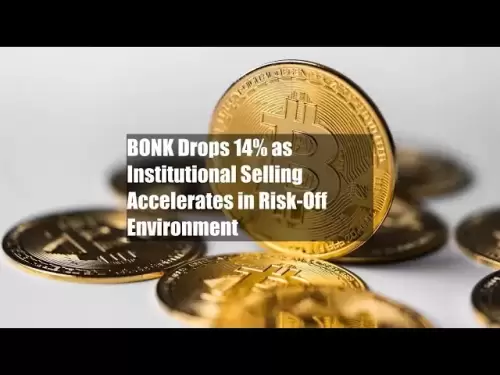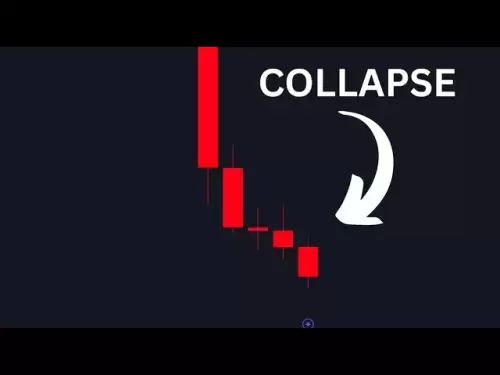-
 Bitcoin
Bitcoin $113900
-1.39% -
 Ethereum
Ethereum $3517
-4.15% -
 XRP
XRP $3.009
1.59% -
 Tether USDt
Tether USDt $0.9997
-0.04% -
 BNB
BNB $766.8
-1.41% -
 Solana
Solana $164.6
-2.38% -
 USDC
USDC $0.9998
-0.02% -
 TRON
TRON $0.3277
0.65% -
 Dogecoin
Dogecoin $0.2023
-1.67% -
 Cardano
Cardano $0.7246
0.05% -
 Hyperliquid
Hyperliquid $38.27
-4.77% -
 Sui
Sui $3.528
-0.52% -
 Stellar
Stellar $0.3890
-0.73% -
 Chainlink
Chainlink $16.16
-2.69% -
 Bitcoin Cash
Bitcoin Cash $539.9
-4.38% -
 Hedera
Hedera $0.2425
-2.00% -
 Avalanche
Avalanche $21.71
-0.97% -
 Toncoin
Toncoin $3.662
5.73% -
 Ethena USDe
Ethena USDe $1.000
-0.02% -
 UNUS SED LEO
UNUS SED LEO $8.964
0.35% -
 Litecoin
Litecoin $107.7
2.33% -
 Shiba Inu
Shiba Inu $0.00001223
-0.40% -
 Polkadot
Polkadot $3.617
-0.97% -
 Uniswap
Uniswap $9.052
-2.49% -
 Monero
Monero $295.1
-3.79% -
 Dai
Dai $0.9999
0.00% -
 Bitget Token
Bitget Token $4.315
-1.85% -
 Pepe
Pepe $0.00001060
0.11% -
 Cronos
Cronos $0.1342
-2.72% -
 Aave
Aave $256.0
-0.87%
How long is the lock-up period for Bitcoin ETF?
Bitcoin ETF lock-up periods vary; consult the ETF's prospectus for specifics, as they depend on regulatory approvals and agreements with early investors.
Mar 29, 2025 at 06:14 am
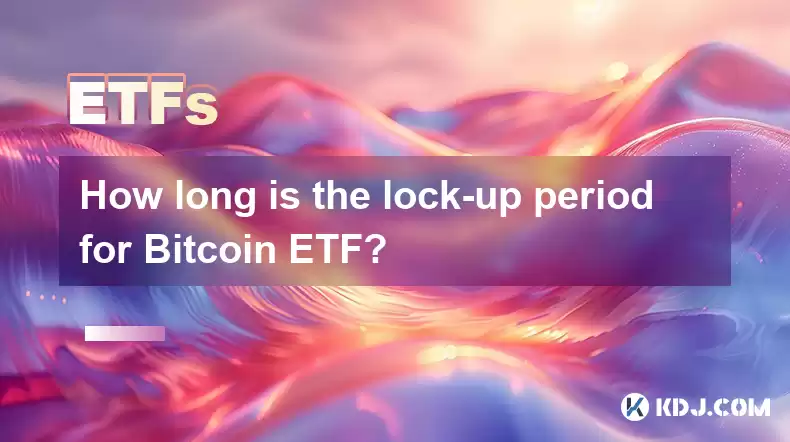
The question of Bitcoin ETF lock-up periods is complex and doesn't have a single, straightforward answer. This is because the specifics depend entirely on the individual ETF's prospectus and the regulatory approvals it receives. There isn't a universal lock-up period mandated by any governing body for all Bitcoin ETFs.
Understanding ETF Lock-Up Periods
A lock-up period, in the context of an ETF, refers to the time frame after the ETF's initial public offering (IPO) during which certain shareholders, usually early investors and insiders, are restricted from selling their shares. This is designed to prevent a flood of selling pressure immediately after launch, which could artificially depress the price. This is particularly relevant for newly listed assets like Bitcoin ETFs where market sentiment can be highly volatile.
The length of the lock-up period varies significantly depending on several factors. These factors include the size of the ETF offering, the regulatory environment, the involved parties' agreements, and the overall market conditions. Some ETFs might have a short lock-up period, perhaps a few months, while others could have a longer period, extending to a year or more. It's crucial to consult the specific ETF's prospectus for precise details.
Factors Influencing Bitcoin ETF Lock-Up Periods
Several key factors determine the duration of a Bitcoin ETF's lock-up period. Regulatory approvals play a significant role, as regulators might impose conditions on the ETF's launch, including stipulations about share trading restrictions. The size of the initial offering also influences the lock-up period; larger offerings might necessitate longer lock-up periods to mitigate the risk of significant price volatility.
The agreements between the ETF sponsor and early investors are another critical determinant. These agreements often specify the conditions and duration of any lock-up arrangements. Market conditions at the time of the ETF's launch can also influence the lock-up period. In volatile markets, longer lock-up periods might be preferred to provide greater stability.
The type of investors involved also plays a part. Institutional investors might have different lock-up periods compared to retail investors. The ETF's prospectus will clearly outline these details. Remember that the lock-up period only applies to certain shareholders; the majority of shares are typically available for trading from the day of the ETF's launch.
Locating Information on Specific Bitcoin ETFs
To determine the specific lock-up period for a particular Bitcoin ETF, you need to consult the ETF's official prospectus. This document is usually available on the ETF issuer's website and through financial data providers. The prospectus provides a comprehensive overview of the ETF, including its investment strategy, fees, and any lock-up provisions.
Carefully reviewing the prospectus is crucial before investing in any Bitcoin ETF. Pay close attention to the section detailing shareholder restrictions and the timing of any lock-up periods. Understanding these provisions is vital for making informed investment decisions. Remember, the absence of a lock-up period doesn't necessarily equate to higher risk; the overall market conditions and the ETF's structure are equally important factors.
Implications of Lock-Up Periods for Investors
While lock-up periods might seem restrictive, they can actually benefit investors. By preventing a surge of selling pressure immediately after launch, they help to maintain a more stable price for the ETF, reducing the likelihood of significant short-term losses. However, it's important to remember that the lock-up period only affects a portion of the shares; many shares are usually available for trading from the outset.
The lack of a universally mandated lock-up period highlights the importance of individual due diligence. Each Bitcoin ETF will have its unique characteristics, including the length of any lock-up periods. Therefore, thorough research into the specific ETF you are considering is essential before investing. Always prioritize understanding the specific terms and conditions outlined in the prospectus.
Understanding the Different Types of ETFs
It's important to understand that different types of Bitcoin ETFs might have varying lock-up periods or even no lock-up period at all. Some ETFs might be structured to allow for more immediate trading, while others might have longer periods of restriction. This is another reason why consulting the prospectus is crucial. The specifics of the ETF's structure will directly impact the trading restrictions.
The complexity of the regulatory landscape also adds to the variability in lock-up periods. Different jurisdictions have different regulatory requirements, which can influence the terms and conditions of Bitcoin ETFs operating within those jurisdictions. These regulatory differences can significantly impact the lock-up periods imposed on ETFs.
The Role of Market Makers
The role of market makers in Bitcoin ETFs also plays a part in shaping the overall liquidity and price stability. The presence of active market makers can help to mitigate the impact of any lock-up periods by providing sufficient liquidity for trading. However, the effectiveness of market makers depends on various factors, including market conditions and the overall demand for the ETF.
The interaction between lock-up periods, market makers, and regulatory oversight creates a dynamic environment for Bitcoin ETFs. This dynamic environment necessitates a thorough understanding of the specific ETF's structure and the regulatory landscape before investing. Remember that the details of each ETF can vary significantly.
Frequently Asked Questions
Q: Is there a standard lock-up period for all Bitcoin ETFs?
A: No, there is no standard lock-up period for all Bitcoin ETFs. The duration varies significantly depending on the specific ETF, its issuer, and regulatory requirements. Each ETF's prospectus will detail its specific lock-up provisions.
Q: Where can I find the lock-up period information for a specific Bitcoin ETF?
A: The lock-up period information is typically found in the ETF's prospectus. This document is usually available on the ETF issuer's website and through financial data providers. Carefully review the prospectus for details on shareholder restrictions.
Q: What happens if a Bitcoin ETF doesn't have a lock-up period?
A: If a Bitcoin ETF doesn't have a lock-up period, it means that there are no restrictions on the sale of shares for early investors or insiders. This could potentially lead to greater price volatility in the short term.
Q: Does a longer lock-up period necessarily mean a safer investment?
A: Not necessarily. While a longer lock-up period can help mitigate initial price volatility, it doesn't guarantee a safer investment. Other factors, such as market conditions and the ETF's overall structure, are equally important considerations.
Q: Can I sell my shares in a Bitcoin ETF before the lock-up period expires?
A: This depends entirely on whether you are subject to a lock-up agreement. If you are an early investor or insider subject to a lock-up agreement, you will be restricted from selling until the period expires. Most retail investors won't be subject to lock-up restrictions.
Disclaimer:info@kdj.com
The information provided is not trading advice. kdj.com does not assume any responsibility for any investments made based on the information provided in this article. Cryptocurrencies are highly volatile and it is highly recommended that you invest with caution after thorough research!
If you believe that the content used on this website infringes your copyright, please contact us immediately (info@kdj.com) and we will delete it promptly.
- Worldcoin, Identity, WLD Price: Decoding the NYC Crypto Buzz
- 2025-08-02 21:10:12
- Shiba Inu: Utility and Community Strength Drive Crypto's Evolution
- 2025-08-02 21:50:12
- Crypto Donations, Trump PAC, and Bitcoin: A New York Minute on Political Coin
- 2025-08-02 20:30:12
- Crypto Market Under Pressure: Bearish Momentum and Rising Volatility Take Hold
- 2025-08-02 20:30:12
- Crypto Market Carnage: Liquidations Soar as Ethereum and Bitcoin Take a Beating
- 2025-08-02 21:55:12
- DeFi Token Summer Gains: Is Mutuum Finance the Real Deal?
- 2025-08-02 18:30:12
Related knowledge
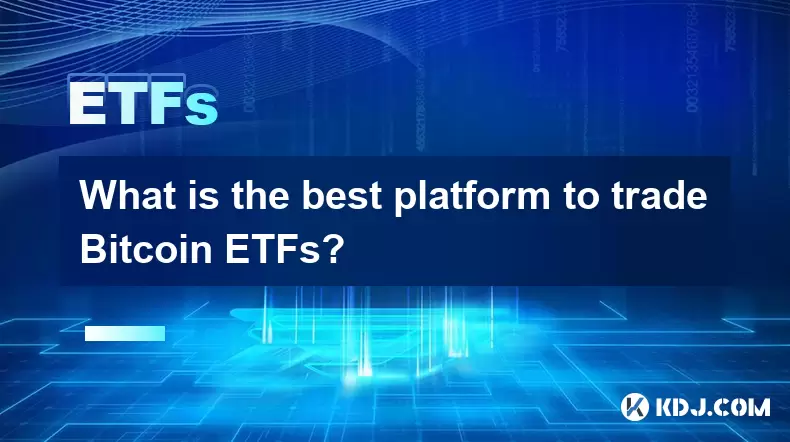
What is the best platform to trade Bitcoin ETFs?
Jul 23,2025 at 04:14am
Understanding Bitcoin ETFs and Their Role in TradingBitcoin Exchange-Traded Funds (ETFs) have gained significant traction among traditional and crypto...
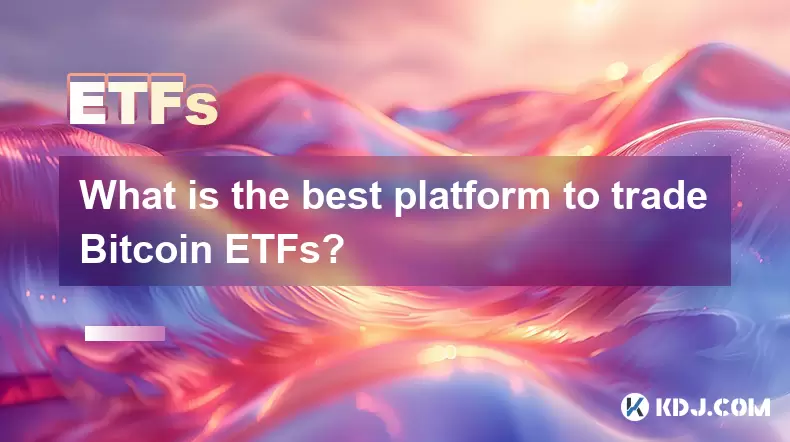
What is the best platform to trade Bitcoin ETFs?
Jul 17,2025 at 03:50pm
Understanding Bitcoin ETFs and Their Role in the MarketBitcoin Exchange-Traded Funds (ETFs) are investment vehicles that track the price of Bitcoin wi...

Will a Bitcoin ETF be available in my 401(k)?
Jul 17,2025 at 10:42pm
What is a Bitcoin ETF?A Bitcoin ETF (Exchange-Traded Fund) is an investment vehicle that tracks the price of Bitcoin without requiring investors to di...
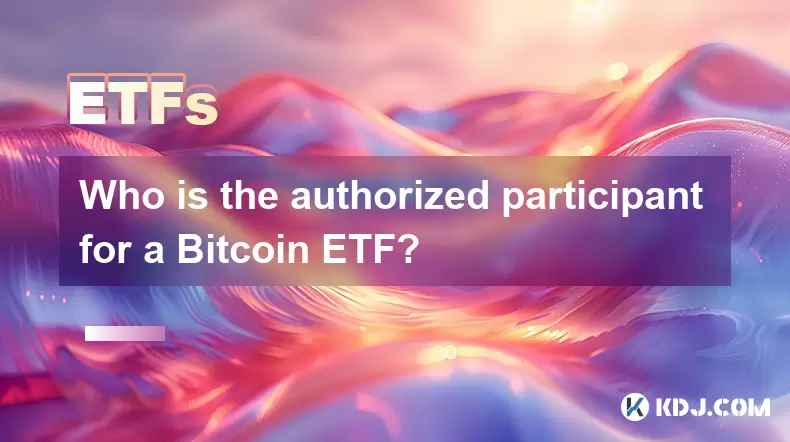
Who is the authorized participant for a Bitcoin ETF?
Jul 18,2025 at 12:42am
Understanding the Role of Authorized Participants in Bitcoin ETFsIn the context of Bitcoin Exchange-Traded Funds (ETFs), an authorized participant (AP...
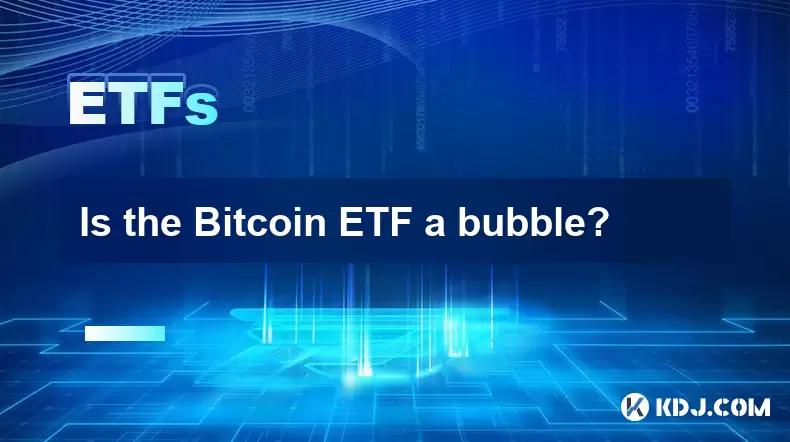
Is the Bitcoin ETF a bubble?
Jul 20,2025 at 06:57am
Understanding the Bitcoin ETF ConceptA Bitcoin Exchange-Traded Fund (ETF) is a financial product that aims to track the price of Bitcoin without requi...
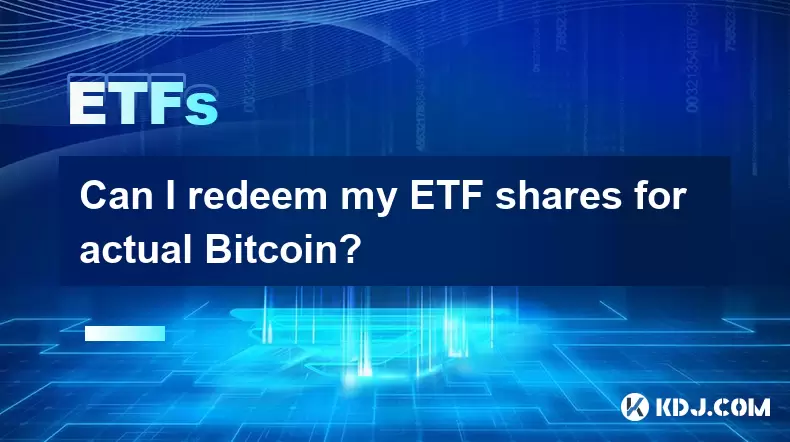
Can I redeem my ETF shares for actual Bitcoin?
Jul 17,2025 at 03:14pm
Understanding ETF Shares and Their Relation to BitcoinExchange-Traded Funds (ETFs) have become a popular investment vehicle for those looking to gain ...

What is the best platform to trade Bitcoin ETFs?
Jul 23,2025 at 04:14am
Understanding Bitcoin ETFs and Their Role in TradingBitcoin Exchange-Traded Funds (ETFs) have gained significant traction among traditional and crypto...

What is the best platform to trade Bitcoin ETFs?
Jul 17,2025 at 03:50pm
Understanding Bitcoin ETFs and Their Role in the MarketBitcoin Exchange-Traded Funds (ETFs) are investment vehicles that track the price of Bitcoin wi...

Will a Bitcoin ETF be available in my 401(k)?
Jul 17,2025 at 10:42pm
What is a Bitcoin ETF?A Bitcoin ETF (Exchange-Traded Fund) is an investment vehicle that tracks the price of Bitcoin without requiring investors to di...

Who is the authorized participant for a Bitcoin ETF?
Jul 18,2025 at 12:42am
Understanding the Role of Authorized Participants in Bitcoin ETFsIn the context of Bitcoin Exchange-Traded Funds (ETFs), an authorized participant (AP...

Is the Bitcoin ETF a bubble?
Jul 20,2025 at 06:57am
Understanding the Bitcoin ETF ConceptA Bitcoin Exchange-Traded Fund (ETF) is a financial product that aims to track the price of Bitcoin without requi...

Can I redeem my ETF shares for actual Bitcoin?
Jul 17,2025 at 03:14pm
Understanding ETF Shares and Their Relation to BitcoinExchange-Traded Funds (ETFs) have become a popular investment vehicle for those looking to gain ...
See all articles





















